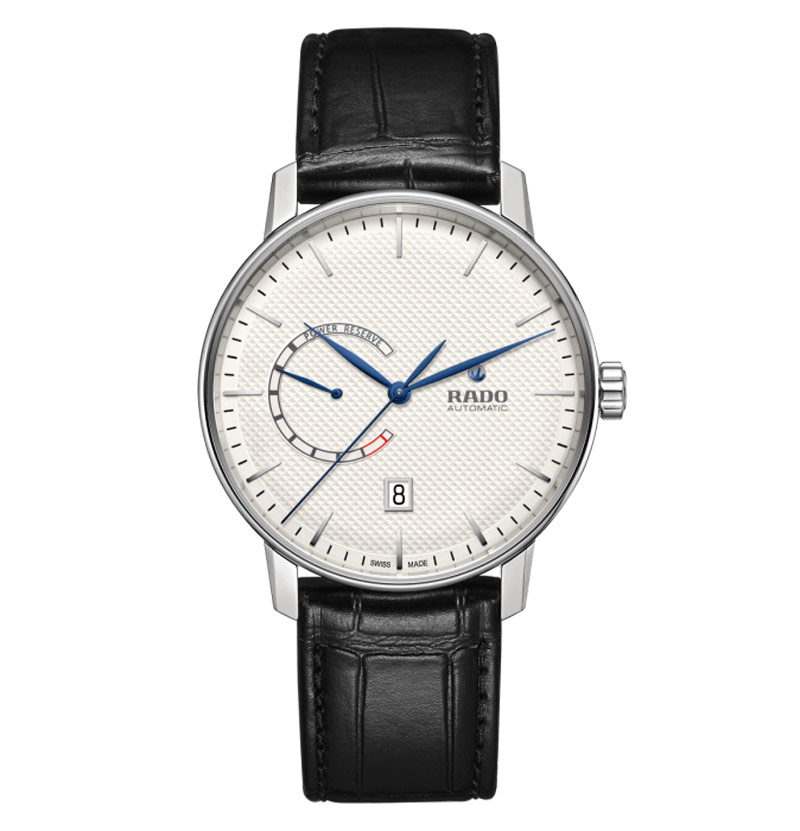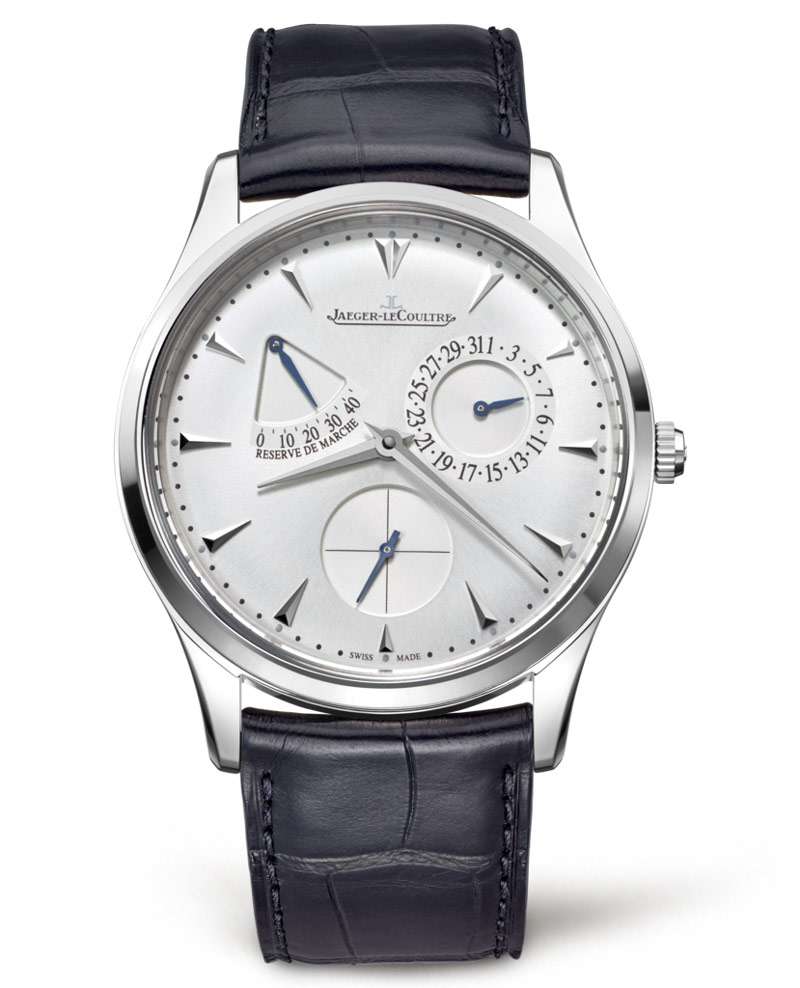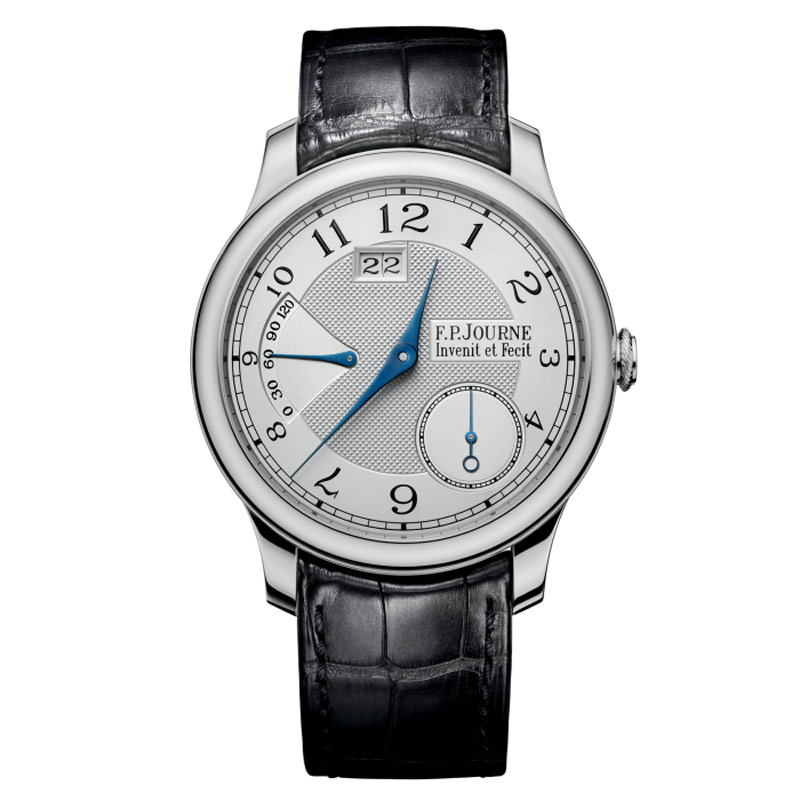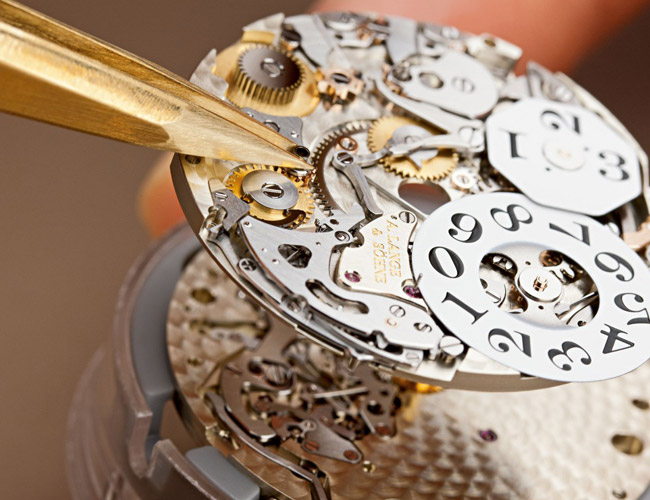The watch world is full of highly technical, often highly French terms that your average guy just doesn’t know. Welcome, then, to Horology in a Hurry, a semi-regular column in which we’ll break down these terms at length one at a time to give you a better understanding of how watches work. This week: The Power Reserve.
What is it?
A simple albeit incredibly useful complication, the power reserve (“reserve de marche,” for all of you Francophiles) indicator essentially lets the wearer know how much tension is left in a mechanical watch’s mainspring in the form of a small hand and a correlating scale given in hours (alternatively, a revolving wheel viewed through an aperture may be used). On a hand-winding watch, the number of hours indicated by the scale is the amount of time left before the watch needs to be wound, while on an automatic watch, it is the amount of time for which the watch will continue to function when it is not being worn.
Where did it come from?
Early marine chronometers and railroad-grade pocket watches featured power reserve indicators, though the first wristwatches with this complication didn’t come into being until the 20th century (which is when the wristwatch itself first became popular).
Why does it matter?
While a fully-wound mechanical watch will often feature a power reserve of up to two days (35-48 hours is a good average figure), it can be useful to know for precisely how many more hours the watch will continue to function until it will require another winding – otherwise, you may find yourself looking down at a watch that has quite suddenly ceased to tell you anything useful or relevant.
As the length of the mainspring correlates directly with the amount of power reserve in the watch, many high-end watches utilizing longer main springs have power reserves of several days. In practice, this means that even if the watch is of the hand-winding variety, if you’ve fully wound it and say, placed it on a desk for a few days, you may still have several days during which you could conceivably wear the watch before you have to wind it again.
Who does it best?
Priced toward the lower end of watches with power reserve indicators, this modern 41mm Rado is inspired by classic Rado models from the 1960s. Featuring a textured dial and date at 6 o’clock, the Coupole Classic utilizes an automatic movement with 80 hours of power reserve, shown by a circular indicator at approximately 9 o’clock. A saphire caseback shows off the movement.
Coupole Classic by Rado $1650
JLC makes some of the most elegant complicated watches in Swiss Watchdom, so it should be no surprise that they can execute a graceful power reserve complication without cluttering a dial. The automatic-winding Reserve de Marche features a 43-hour power reserve, and a simple indicator with a blued steel hand in the left-hand sector of the dial lets you know how much of that reserve is left in the mainspring.
Master Ultra Thin Reserve de Marche by Jaeger LeCoultre $8650
If you really want to go all out, you really can’t go wrong with FP Journe. The Octa Automatique Reserve boasts an in-house movement with power reserve of 5 days, which, according to our calculations, is like, a lot of hours (the power reserve is calibrated in units of 30 hours, up to 120 hours). This stunning watch is available in a variety of dial, bracelet, and metal options, but all are emblematic of this master watchmaker’s incredible eye for detailed design.
Octa Automatique Reserve Calibre 1300.3 by FP Journe Learn More Here
More Watch Terms Defined
New to watches? These terms should help you get started. Read the Story





